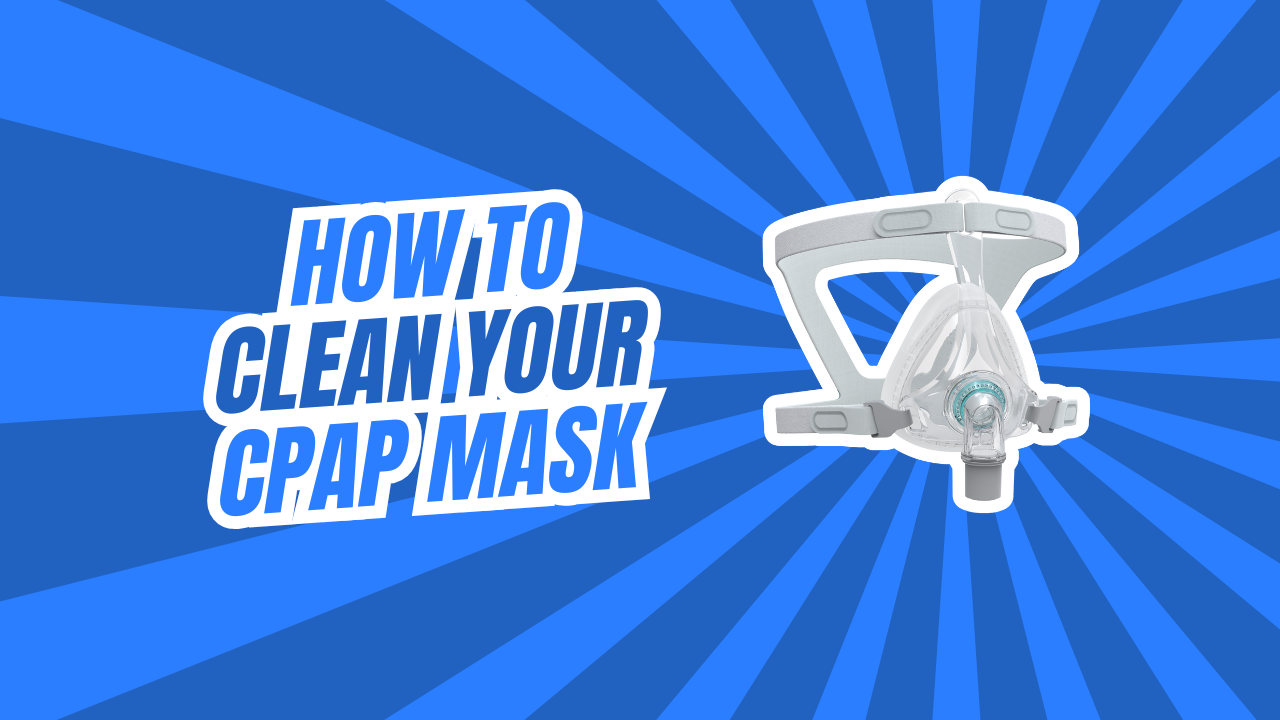
How to Clean and Maintain Your CPAP Mask (Step-by-Step Guide)
Keeping your CPAP mask clean is one of the most important parts of successful CPAP therapy. A regular cleaning routine helps to extend the life of your equipment, keep your therapy effective, and prevent issues like skin irritation, unpleasant smells, or infections.
If you’re wondering how to clean your CPAP mask properly and easily, this step-by-step guide will walk you through everything you need to know.
Why CPAP Maintenance Matters
Daily use of a CPAP device exposes your mask and equipment to moisture, oils from your skin, and airborne particles. Without regular cleaning, your mask can accumulate:
-
Dirt and oils
-
Bacteria
-
Mould or mildew
-
Residual moisture
Good CPAP maintenance helps ensure:
-
A comfortable, secure mask fit
-
Better hygiene and health
-
Longer equipment life
-
More effective sleep therapy results
How Often Should You Clean Your CPAP Mask?
-
Daily: Clean your mask cushion (the part that touches your face)
-
Weekly: Clean the entire mask, including headgear, frame, and tubing
Even if you only use your CPAP occasionally, regular cleaning is essential to keep the system working properly.
How to Clean Your CPAP Mask (Daily)
Step 1: Disconnect the mask from the tubing and headgear.
Step 2: Gently wash the mask cushion in warm water with mild, fragrance-free soap.
Step 3: Rinse thoroughly under clean, running water.
Step 4: Leave the mask cushion to air-dry on a clean towel, away from direct sunlight.
How to Deep Clean Your CPAP Mask (Weekly)
Step 1: Separate all parts of the mask (cushion, frame, elbow, and headgear).
Step 2: Soak all components (except the headgear) in a basin of warm water and mild soap for 15–20 minutes.
Step 3: Use a soft brush (like a CPAP brush or a clean toothbrush) to remove any buildup in hard-to-reach places.
Step 4: Rinse all parts thoroughly with clean water.
Step 5: Air-dry completely before reassembling.
Note: Always follow the specific cleaning instructions provided by your mask manufacturer.
Tips for Easy CPAP Maintenance
-
Avoid harsh cleaners: No bleach, vinegar, or strong soaps – they can damage your mask.
-
Use distilled water in your humidifier to reduce mineral buildup.
-
Inspect regularly for signs of wear and tear, like cracks or loss of flexibility.
-
Replace your mask cushion every 1–3 months for best performance.
-
Replace the full mask frame and headgear every 6–12 months, or sooner if needed.
Can I Use CPAP Cleaning Machines?
There are automated CPAP cleaners on the market that use ozone or UV light. While these may be convenient, they do not replace manual cleaning with soap and water. Always follow your device and mask manufacturer’s guidance regarding the use of CPAP cleaning machines.
Learning how to clean your CPAP mask properly is a simple but powerful step in protecting your health and making the most of your CPAP therapy. By building a regular CPAP maintenance routine, you’ll enjoy better sleep, improved comfort, and a longer life for your equipment.
